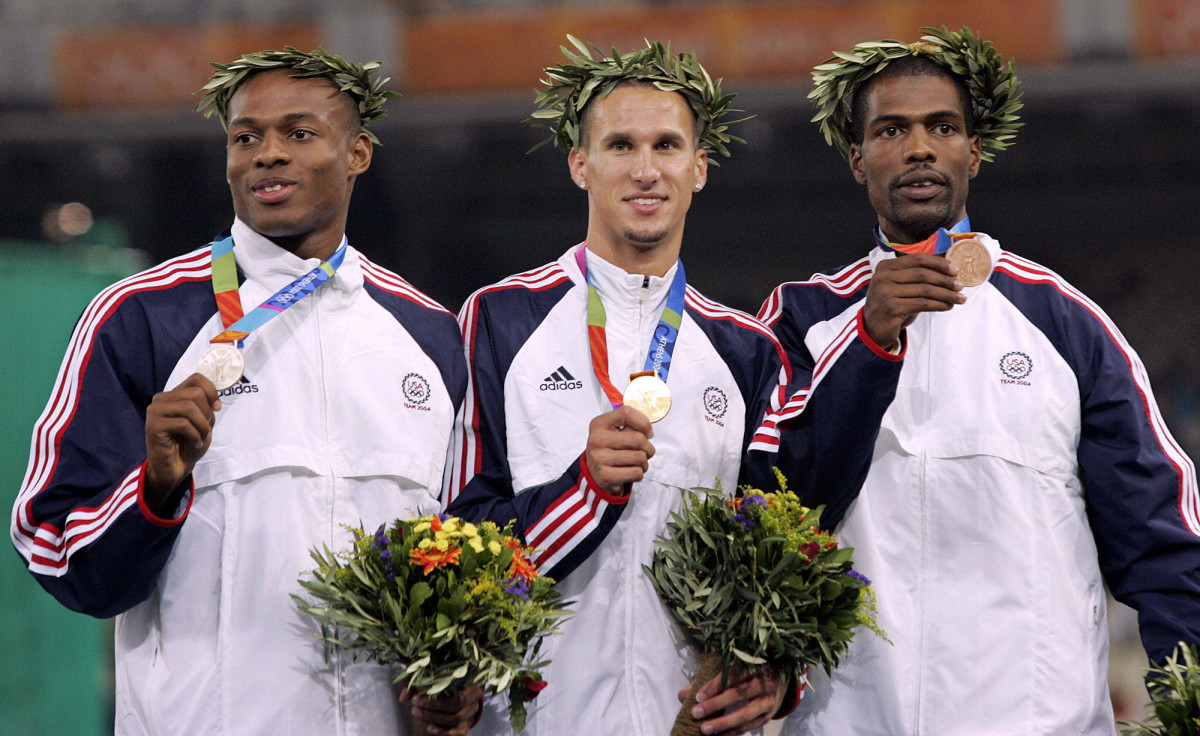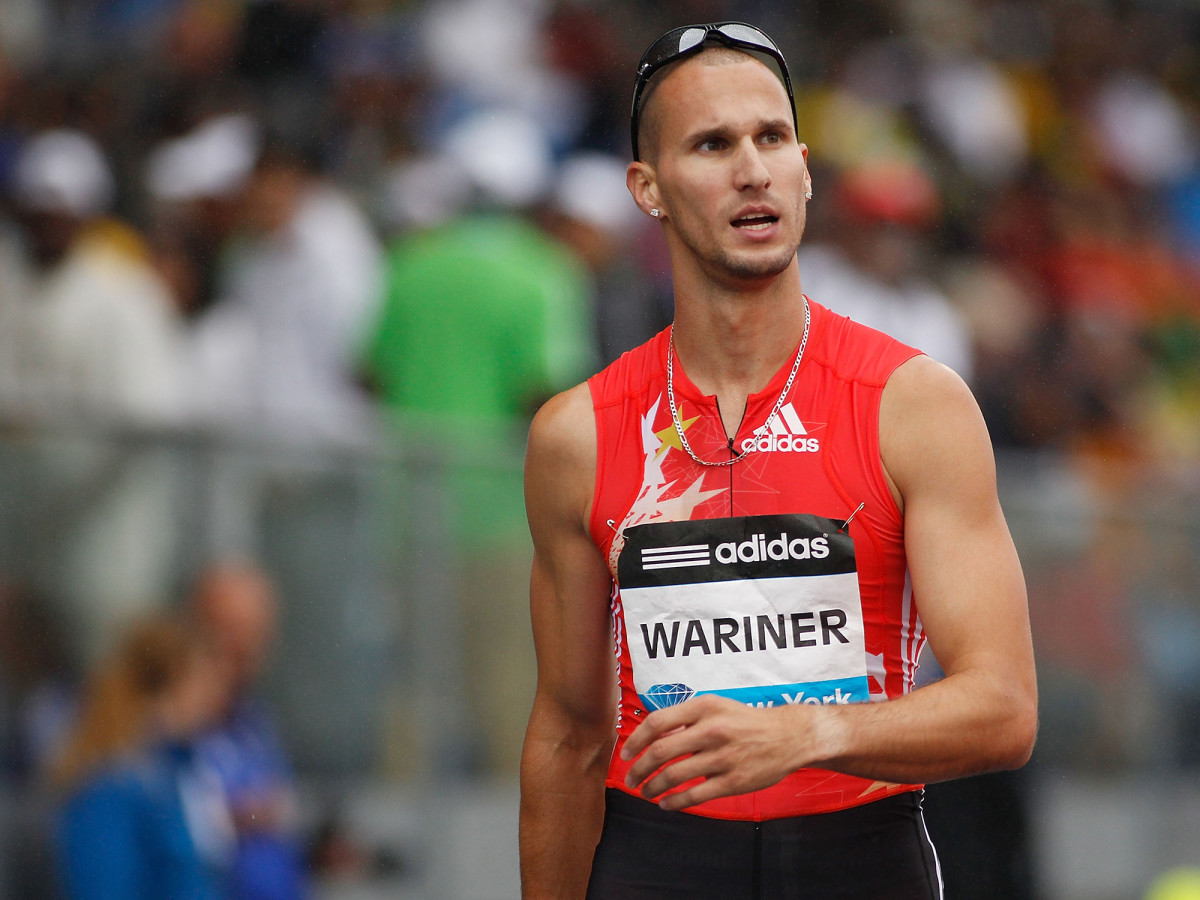Olympic Gold Medalist Jeremy Wariner Retires After 'Freaky-Fast' Career

An Olympic gold medalist shows up at your door to hand over your sandwich, lemonade and chocolate chip cookie from Jimmy Johns. If you recognize the thin frame, bald head and sunglasses without the speed suit, then you might realize it’s 2004 Olympic 400-meter gold medalist Jeremy Wariner.
Despite track and field’s niche popularity in the United States, a few people have recognized him—some seeking selfies, but most asking the same question: “What are you doing here?”
The IOC Should Have Put History Aside and Given the 2024 Olympic Games to Los Angeles
So why is one of the fastest U.S. sprinters off all-time delivering sandwiches in Dallas?
There’s no camera crew popping out of the bushes. This is Wariner’s full-time job now. Ten years after running 43.45 for 400 meters at the 2007 world championships in Osaka, Japan, Wariner recently told SI that he has retired from track and field to focus on his business.
For the past two years, he’s balanced his professional running career with ownership of a Jimmy John’s franchise, where he oversees 20 employees with his wife in Texas.
“Last year, I was 100% dedicated to running and I made a couple sacrifices to try and make one more Olympics. Because of these injuries, toward the end of my career, running became a routine and it wasn’t fun anymore,” Wariner says. “I knew deep down that I still had it but I was just doing so much to try and stay healthy that I was fatiguing. My body just wasn’t recovering. That’s when I knew the 44s and 43s were long gone.”

From 2000 to 2010, Wariner was faster than most in the world. A string of injuries kept Wariner away from the global championship stage since 2009. Last summer’s disappointment at the U.S. Olympic Trials led him to make the decision about retiring from the sport.
Wariner became a star in track and field not too long after fellow Baylor star Michael Johnson set world records in the 90s and won three gold medals. Wariner arrived at Baylor in 2003 and trained under Johnson’s coach Clyde Hart. He showed flashes of greatness but just couldn’t stay healthy his freshman year. When he managed to stay healthy for his sophomore season, he put together one of the best campaigns ever by sweeping the indoor and outdoor NCAA titles at 400 meters and winning the Olympic Trials and Olympics in Athens at 20 years old.
“The biggest thing I remember about the Olympics was when I got down to the part of the stadium where I knew Jeremy would be coming up to do his victory lap, he came up to the railing and I said to him, ‘Jeremy, that was great you realize what you just did?’” Hart says. “ He looked at me and said, ‘Yes, I broke the school record in the 400.” It was Michael Johnson’s Baylor school record and I said, Jeremy, ‘You just won the gold medal in the Olympics!’ He just replied, ‘Yeah but this was going to be my last collegiate race and I wanted to get that record.”
Wariner signed a six-figure professional contract after Athens and went on to run under 44-seconds for the 400 meters nine times from 2005 to 2007. Only Johnson (22) has accomplished the feat more times. One of the differences between Wariner and Johnson is how Johnson peaked at 31 and Wariner never ran any faster after 23 due to some troubling hip and foot problems.
“I don’t think I was going too fast too early,” Wariner says. “I just think I had the unfortunate situation of having a knee surgery when I was 25 and then another one year and a half later. That takes a big toll on you. I was able to come back from that first but after that second one, it set me back. All athlete are different. Me and Michael ended up being opposites.”
As Wariner slowed in his career, the 400 meters also saw an evolution of its own. Spike and apparel technology have advanced, making things lighter. Athletes are training differently. The improvement of track surfaces has also played a major role. The same track on which Michael Johnson ran 43.18 in Sevilla or 43.44 in Atlanta isn’t the same as the one in Rio de Janeiro last summer when Wayde van Niekerk ran 43.03. Wariner noted that some of the newer tracks around the world have felt like running on concrete to him.
“Track is a non-contact sport but in reality, it is a contact sport because you’re making contact with the ground with a tremendous force and you’ll pay a price down the road,” Hart says.
Unable to keep up with some of those changes, the allure of Wariner at high-profile meets wore off by 2012 when he didn’t compete at the Olympics. His contract with Adidas expired at the end of 2013 and wasn’t renewed, so he found himself in the position of many struggling track and field athletes with a lack of financial support.
How Soccer Players Are Getting Smarter On the Field With Brain-Training Video Games
“I had money that I saved up but there’s athletes out there that aren’t fortunate enough to have made what I did at the beginning of my career,” Wariner says. “It’s not good for our young athletes. At the end I realized, it’s not about who you were. If you’re not running fast now, you’re not even getting into meets. If you are lucky to get in, sometimes they won’t pay anything except maybe the hotel and some food. For U.S. athletes it’s not cheap to get out to Europe so you have to pay your travel and hope to win back what you’re investing to chase fast times. Sometimes you lose money. The prize money now isn’t what it used to be.”

Wariner hopes that his career now serves as a lesson to younger athletes that it’s impossible to run at a high level forever, and that planning for the future is important. In addition to his sandwich business, Wariner is aiming to get into coaching in the near future. He has some experience as a volunteer assistant with Baylor but he’d like to finish his education and then look into options at other schools.
For now, he remains focused on a different “Freaky Fast” mantra. Wariner still remains in a race against the clock when a Jimmy John’s driver misses a shift—sometimes leaving it up to him to get in his car to make a delivery. There’s a clock at his location that marks when the order leaves the store to when it’s delivered within the community. Wariner is proud of his eight to nine minute average on orders.
“I walk like I run,” Wariner says. “Getting from our building to the door, I think I’m still a lot quicker than most people.”
